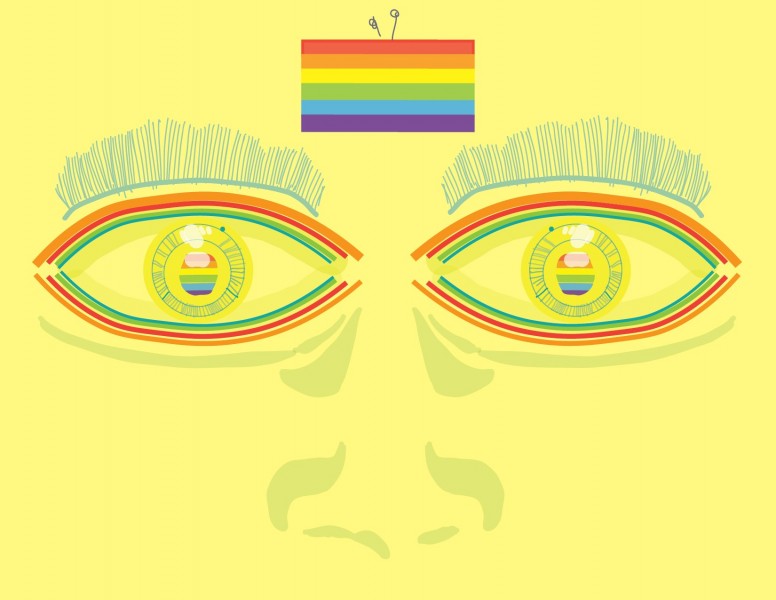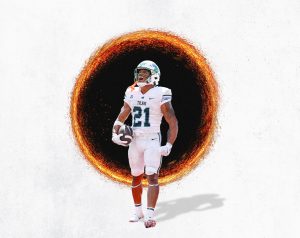Just because you watch ‘Queer Eye’ doesn’t mean you’re not homophobic
September 18, 2019
The moment I first saw Tan France on Netflix’s promotion for the reality show “Queer Eye” was the first moment I ever saw myself represented on television.
Brown gay Muslim men seemed like an endangered species – we all knew that some of them existed, but few of us were ever lucky enough to see any. Tan France was the affirmation that we were here, and because of that, I swore myself then to be a loyal “Queer Eye” fan. As time now shows, I am far from identifying with that label ever again.
Netflix’s “Queer Eye” came as a reboot to Bravo’s early-2000s show, “Queer Eye for the Straight Guy.” The premise of the plot is five gay men* giving makeovers to unsuspecting, nominated individuals.
At surface view, the show is about people from marginalized communities helping others in need, and it would seem illogical not to support that. “Queer Eye,” however, does little to focus on the makeover guests on the show and rather markets itself as a champion of Queer culture.
The stars of the show have been cited for bringing about political peace, were welcomed at the most recent World Pride Parade and were celebrated for taking the politics out of queerness to just make “feel good-television”.
There is something deeply disturbing about Queer people having to take politics out of their identities to make straight people feel good when they watch us on television. “Queer Eye” fundamentally contradicts everything it means to be Queer and provides a watered down, unseasoned version of political oppression to its predominantly white audience.
The show’s politics are just about as bland as Antoni’s cooking looks.
queer eye but instead of perpetuating the problematic focus of queer culture on aesthetic and looks it’s queer men and cis men unlearning toxic masculinity together and having hard conversations holding each other accountable
— aut. (@aelisemoon) March 14, 2018
The reclaiming of “Queer” is largely credited to activist group, Queer Nation. In its manifesto, Queer Nation asserts that “Queer” as a sexual identity is a complete opposition to the sexual identities of gay, lesbian and bisexual. Liberation and political resistance are explicitly foundational to Queer identity. To be Queer is to be a political troublemaker.
Yet, there is a valid case to be made about the negative effects of forcing authentic political participation on members of marginalized communities. Just because someone is a sexual minority or Black or Brown should not mean they have to herald all the issues of their community.
“Queer Eye,” however, is not only branding itself as a representative for the Queer cause, but also using a term rooted in resistance in its very show title. These undoubtedly necessitate some social accountability.
And when measured against intersectional measures of social accountability, “Queer Eye” fails brutally. Just recently, “Queer Eye” star Karamo Brown told media he was excited to work with former Trump administration member Sean Spicer on ABC’s “Dancing with the Stars,” referring to him as a “good guy.” In August, the show was exposed for whitewashing an Old Navy store in a predominantly Black city.
#OldNavy forced POC workers from the floor and kept them out of sight for a #QueerEye taping. They spent all night preparing the store, only to be told to sit in the back during filming the next day. @QueerEye @OldNavy @netflix #racism #Discrimination #Hollywood #Netflix pic.twitter.com/xGcEBnJLF4
— Dorian’s Demon (@DoriansDemon) August 26, 2019
The minimal attempts at intersectional politics on “Queer Eye” and amongst its cast members fall into an all-too-well-known routine of inauthentic social justice advocacy. The show boasts the two men of color in its cast and a variety of differently abled, gender variant and racially diverse guests receiving makeovers. But when the time comes for “Queer Eye” to act as a platform for movements of immigration justice, police brutality and violence against Black transgender women, the cast is silent.
Instead, they make an appearance in Taylor Swift’s music video, “You Need to Calm Down,” truly fighting what needs to be fought.
As much as “Queer Eye” manipulates a term of resistance for capitalist media gain, the show really is not for Queer people, but rather straight, cisgender white audiences. And in a show displaying zero evidence of intentional social accountability, straight, cis white audiences are being fed the same ideas that continue to isolate the most marginalized of the community, particularly Black transgender women.
“Positioning five cisgender gay men as the standard-bearers of queerness in 2018 is regressive and reductive” Indie Wire’s Jude Dry wrote in a recent Op-ed.
The straight cis audiences are able to turn on “Queer Eye” and see exactly what they want Queer people to be – helpful fashion and culture tools, straight-passing and wealthy. The Queer experiences they will not see are those of Johana Medina Leon – the second transgender woman killed in Immigration and Customs Enforcement detention – the staggering 18 Black transgender women murdered in 2019 and even the cis white gay DC couple brutally assaulted by a group of 12 men this past June.
Sam Brooks from “The Spinoff” has said that “The problem was that because people had seen the show, because people had seen the contrived spectrum of queer maleness that it cultivated, they thought that they knew me.” “Queer Eye” is telling people what queerness is without bothering to mention any of the political resistance inherent in what queerness actually is.
Straight people too often call themselves allies to Queer liberation without actually concerning themselves with the causes of the most marginalized Queer people. Having a gay friend, attending the city pride parade and watching “Queer Eye” does not make a straight person an opponent of homophobia.
And straight people that support the systems of racism, anti-Blackness and classism that systematically impact Queer people the most uphold homophobia and transphobia in the most dangerous ways.
If your Queer allyship is not intersectional, then it is not real.
Fundamentally, “Queer Eye” is a business. The nature of the evolution of the show and its propagation in cultural media touches on a recurring theme of political resistance in the modern day: the manipulation of oppressed identities for capitalist gains.
“Queer Eye” succeeds by marketing itself and profiting from the cis straight white audiences that will pay to watch Queer people be what they want them to be.
Tan France lives at the intersections of an oppressed race, religion and sexual identity, but “Queer Eye” will only show the sides of that most profitable for the show and, frankly, will do little to dismantle the most deeply ingrained systems of homophobia.
* In June 2019, “Queer Eye” star Jonathan Van Ness came out as genderqueer and prefers to use he/him pronouns.











Jenee • Nov 1, 2019 at 1:30 pm
Jonathan Van Ness is non-binary, which means that there is one non-cis member of the group. Antoni is bisexual I believe and that’s desperately needed representation for the community (although I do wish he’d talk about it on the show). These guys aren’t going into Red States boasting MAGA hats, they’re making real change by going into predominantly prejudice areas (in all facets) and taking them head-on to try to change their views with conversations, instead of moaning that the heroes they help aren’t supportive enough of them and being political every episode. That’s not really the point of the show, it’s all about learning that we as humans have more in common with each other than different and that’s the real way we help change the bigoted perspectives, not constantly challenging every person (whether they support you or not) of not doing enough for the community.
But you got yourself a clickbait title and I fell for it so I guess you won in the end.
Tulane student • Sep 22, 2019 at 7:03 am
If straight people are the absolute worst for liking queer eye, then what is your idea for the “perfect intersectional TV show?” Also, on your Sean Spicer comment, get out of your social justice world bubble. One half of the country are Republicans, and if you were able to see everyone in the “intersectional” framework you boast maybe you would be able to understand why someone would want to find the good in someone across political lines. Not are Republicans are bad, not all Democrats are good. If you keep trashing people for not being as intersectional as possible you perpetuate the stereotype of the triggered SJW who can not work with anyone with opinions different from their own.